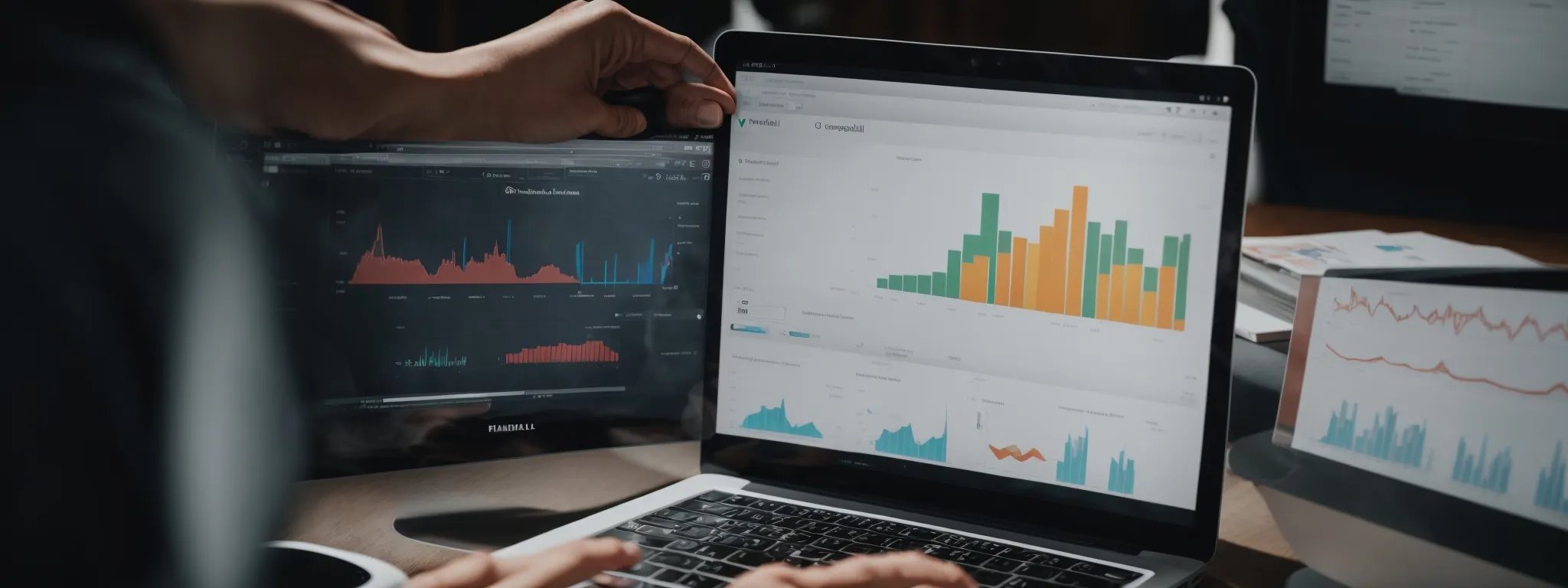How To Optimize for Google Discover
Maximizing Visibility: A Guide to Optimizing Your Content for Google Discover In the dynamic realm of digital content, Google Discover offers a unique platform for capturing user […]
Maximizing Visibility: A Guide to Optimizing Your Content for Google Discover
In the dynamic realm of digital content, Google Discover offers a unique platform for capturing user interest through personalized, proactive content recommendations.
It stands apart as a potent source of website traffic, subtly shaping internet user behavior by blending the interactive appeal of a social media feed with the search savvy of Google’s algorithms.
High-quality content that aligns with user interests and search activity is paramount in securing a place within the coveted Google Discover feed.
For brands and content producers keen on enhancing their visibility, mastering the art of Google Discover optimization signifies a pivotal shift towards engaging a broader audience.
Keep reading to explore the essential strategies that make content not only discoverable but irresistible to the discerning eyes of the Google Discover audience.
Key Takeaways
- Google Discover Prioritizes User Interests and Presents Personalized Content Based on Machine Learning Analysis of Search and Browser History
- Quality Content With Authenticity, Authority, and Visual Appeal Is More Likely to Sustain Engagement and Visibility on Google Discover
- A Mobile-First Design Philosophy Is Essential for Optimizing Content for Discover, Focusing on Responsive Interfaces and Fast-Loading Pages
- Structured Data Enhances a Publisher’s Content Visibility by Making It Easily Categorizable for the Google Discover Algorithm
- Regular Analysis of Google Search Console Data Informs Strategic Content Adjustments to Align With the Dynamic Preferences of the Target Audience
Understanding Google Discover and Its Impact on Visibility

In the fast-paced world of SEO, staying visible in the constantly shifting sands of search engines remains a top priority for publishers seeking an edge.
Google Discover emerges as a pivotal feature in this landscape, offering a personalized content recommendation feed to users even before they articulate their query into the search bar.
Understanding the intricacies of Google Discover marks the beginning of tapping into a potent source of website traffic.
This guide sheds light on the mechanics underlying Google Discover and the nature of content it preferences, setting the stage for publishers to tailor their strategies and maximize the reach of their offerings.
Dive Into the Mechanics of Google Discover
The core algorithm of Google Discover prioritizes user interests to curate a unique stream of content. By harnessing Machine Learning, it analyzes search history, browser history, and app behavior to predict and present articles, videos, and other media that resonate with the individual’s preferences.
Content that aligns with the ever-evolving interests of the Google Discover audience stands a greater chance of enhancing visibility. Publishers must strike a balance between relevance and appeal, ensuring that each piece is not only valuable but also captures the essence of users’ current fascinations:
| Component | Relevance to Google Discover |
|---|---|
| User Interests | Reflecting topics that capture a user’s consistent engagements |
| Search Activity | Integrating trends from user’s recent queries |
| Quality of Content | Adhering to Google’s guidelines for trustworthiness and expertise |
| Visual Appeal | Incorporating compelling imagery to draw attention |
Explore the Types of Content Favored by Discover
Content that thrives on Google Discover tends to be fresh, engaging, and highly relevant to the user’s interests. From informative blog posts that answer pressing questions to vibrant web stories that captivate with visual narrative, success hinges on the ability to weave topical authority with an immediate appeal to the reader’s curiosity or needs.
Publisher’s content, when optimized correctly, achieves a prominent place on the Google Discover feed by presenting a symbiotic blend of educational value and entertainment. For instance, a well-researched, in-depth analysis on a trending topic, enriched with striking images or interactive media, is more likely to capture the attention of an audience and sustain a meaningful connection through the vast space of the internet user’s journey.
High-Quality Content as the Key to Google Discover

Securing a position within the visible spectrum of Google Discover hinges on delivering content that transcends the ordinary, providing an enduring allure that is both timely and timeless.
Quality is not merely a benchmark but the foundation upon which content must be constructed to resonate with Google’s sophisticated mechanism for personalizing user feeds.
As publishers navigate the dynamic terrain of Discover, understanding the elemental composition of content that endures—content that is continually relevant and perpetually engaging—becomes imperative for securing and maintaining visibility before a discerning audience.
Elements That Define Quality Content for Discover
Quality content for Google Discover must embody a level of authenticity and authority that establishes trust with the audience. It should emerge from credible sources, exude expertise, and consistently maintain accuracy, pushing away from the realm of clickbait titles which can damage credibility and user experience.
Additionally, content poised for visibility on Google Discover should seamlessly blend an insightful narrative with an enthralling visual component. This entails not only exceptional writing but also the strategic incorporation of multimedia elements that complement the text and enhance user engagement.
Crafting Evergreen Content That Resonates With Discover
Crafting evergreen content for Google Discover means creating work that not only endures but flourishes over time. Strategic composition centers on topics that inspire, educate, and remain relevant, independent of temporal fluctuations, aiming at a consistent presence on users’ feeds.
The longevity of evergreen content on Google Discover is secured through a deep understanding of foundational subjects that perpetually resonate with the target audience. This form of content transcends fleeting trends, offering substance and value that sustains user engagement and fortifies visibility across the changing digital landscape.
Leveraging Visuals for Enhanced Discover Attraction

In the arena of Google Discover, the visual component of content wields considerable influence over its ability to attract and retain the attention of users.
The precision with which visuals are chosen and integrated into Discover posts can be a deciding factor in the success of a publisher’s visibility.
High-quality, relevant images are paramount, as they not only cater to the aesthetics but also serve as a touchstone for user engagement.
The meticulous adherence to technical requirements amplifies this impact, ensuring that visuals are displayed optimally across devices, enhancing the overall allure of the content in the quest to captivate the ever-dynamic Google Discover audience.
Choosing the Right Images for Discover Posts
Selecting the appropriate imagery for Discover posts requires a strategic approach, with an emphasis on the alignment between visual content and the publisher’s message. The visual elements must not only be striking and high quality but also serve as an accurate reflection of the topic, thus creating a cohesive and compelling package for the user.
A key role that images play in Discover content is guiding the reader’s emotional response, setting the tone for the narrative. Impeccable visuals draw the user in, fostering a sense of curiosity or resonance, which in turn enhances user experience and encourages deeper engagement with the content.
Technical Requirements for Visuals in Discover Content
In the realm of Google Discover, adherence to the technical specifications for visuals ensures that content is as appealing in form as it is in substance. High resolution and suitable aspect ratios are key conditions for images to be considered by Discover, as they must be able to maintain quality across a range of devices, from smartphones to desktop displays, engaging the user with a pristine and professional appearance.
Publishers aiming to optimize visuals for Discover must also account for the speed at which their images load. Google prioritizes user experience, and slow-loading visuals can lead to a less favorable display on the feed. Consequently, balancing image quality with optimization techniques is essential for ensuring that visuals are both striking and swiftly accessible to users, thereby aiding in the retention of visitor attention within the Discover ecosystem.
Optimizing for Mobile Users on Google Discover

As user interaction with the internet increasingly shifts to mobile devices, the necessity for a mobile-first design philosophy in content creation becomes unequivocal, especially when considering the parameters of Google Discover.
Websites must now prioritize mobile responsiveness to ensure they align with the preferences and behavior patterns of users on-the-go.
This imperative transcends mere adaptation, urging creators and publishers to embrace best practices that foster an optimal mobile experience.
Engaging mobile users with content precisely formatted for smaller screens and touch-based interfaces propels visibility and user engagement within Google Discover’s personalized feed.
Importance of Mobile-First Design for Discover Optimization
Embracing a mobile-first design is not merely a trend but a strategic imperative for content creators targeting visibility on Google Discover. A layout that responds elegantly to the wide array of mobile screen sizes ensures that users can access and interact with content seamlessly, fostering user satisfaction and amplifying the chances of content being featured prominently.
In implementing a mobile-first approach, LinkGraph’s SEO services underscore the importance of designing with the user’s mobile experience at the forefront. By crafting content that is as functional as it is informative, websites not only cater to the preferences of the Google Discover algorithm but also to the convenience and immediacy demanded by modern mobile users.
Best Practices for Mobile-Friendly Content
In the quest to enhance user connectivity across mobile platforms, one paramount practice includes simplifying navigation. Streamlined menus and touch-friendly interfaces promote accessibility and reduce friction, fostering uninterrupted engagement with content.
Another cornerstone of mobile optimization underscores the significance of fast-loading pages: a swift, Responsive Experience Retains users, who might otherwise abandon slow-loading sites. Accommodating users’ expectations for speed with optimized image sizes and lean code ensures content resonates in the fast-paced mobile environment:
| Best Practice | Benefit |
|---|---|
| Simplified Navigation | Enhances accessibility and reduces user friction |
| Speed Optimization | Meets user expectations for quick content delivery |
| Touch-friendly Interfaces | Provides comfort and ease of use for mobile interface interaction |
| Optimized Image Size | Fosters an agile and visually appealing mobile experience |
Utilizing Structured Data to Boost Discoverability

In the contemporary quest for prime positioning within the digital landscape of Google Discover, one cannot overlook the profound influence of structured data.
This meticulous approach to organizing information underpins the discoverability of content, serving as a beacon for the Google Discover algorithm to effectively recognize and prioritize offerings.
Publishers and content creators stand at the threshold of an opportunity to amplify their presence, should they skillfully implement structured data to highlight the context and relevancy of their content.
The forthcoming exploration into how structured data can enhance content recognition on Discover, alongside a practical guide for its deployment, seeks to equip publishers with the tools necessary for invigorating their content’s visibility in this highly curated arena.
How Structured Data Aids in Discover Content Recognition
Structured data emerges as a silent yet potent ally in the conquest for content visibility within Google Discover. By annotating content with relevant and precise metadata, publishers enable the Discover algorithm to parse and categorize content more effectively, elevating the odds of it being surfaced to users.
Implementing structured data, such as schema markup, brings clarity to the context and purpose of web content, granting it a noteworthy advantage in the curation process. This strategic structuring beckons Discover, advocating for a publisher’s content by signaling its relevance and quality to the algorithm, thereby assisting in the trajectory towards increased visibility and user engagement.
Step-by-Step Guide to Implementing Structured Data for Discover
Embarking on the journey of deploying structured data begins with the identification of the most relevant schema types for your content: whether that is articles, events, products, or any other categories pertinent to your content’s nature. Once identified, creators can seamlessly integrate this schema into their website’s HTML, enhancing their content’s visibility to not only Google Discover but to the algorithm at large.
- Pinpoint the appropriate schema type that resonates with your content’s essence.
- Embed the selected schema markup directly into the HTML of your website.
- Utilize Google’s Structured Data Testing Tool to verify correct implementation.
- Monitor the performance in Google Discover through Google Search Console for insights.
After implementing the necessary markup, it is crucial to verify the deployment with tools such as Google’s Structured Data Testing Tool. This step confirms the markup is both correctly inscribed and decipherable by Google’s algorithms, paving the way for accurate content representation in Discover feeds, enhancing the alignment with users’ interests, and bolstering the likelihood of heightening engagement.
Tracking Your Content Performance on Google Discover

As online publishers and creators vie for prominence in the bustling digital marketplace, the capability to track the performance of content within Google Discover is invaluable.
Grasping the nuances of reader engagement through analytics fortifies the capacity to refine and hone content strategies.
By employing tools such as Google Search Console, professionals can gain keen insights into Discover stats, informing a deliberate and data-driven approach to content optimization.
The forthcoming discussion delineates methodologies for leveraging this analytical prowess to scrutinize Discover data, with the aim to adapt and elevate content in alignment with the fluid preferences of the target audience.
Using Google Search Console to Monitor Discover Stats
Google Search Console emerges as an indispensable tool for publishers aiming to decipher the performance of their content on Google Discover. The analytics provided offer a lens into how often posts appear in Discover, the click-through rates they garner, and trends over time, enabling publishers to distill actionable insights from comprehensive data.
By regularly consulting Google Search Console, professionals can assess the impact of their content, isolate high-performing pieces, and understand the preferences of their audience. This continuous monitoring allows for an agile approach to content strategy, fostering informed decisions that propel a publisher’s work to the forefront of the Discover feed.
Analyzing Discover Data to Refine Content Strategies
LinkGraph’s SEO services recognize the crucial role that Google Search Console analytics play in crafting a masterful SEO content strategy. By analyzing impressions, click-through rates, and user engagement metrics specific to Discover, content creators uncover the themes and styles that resonate most, enabling a strategic pivot towards material primed for audience appeal and sustained interaction.
Effective examination of Discover data unveils patterns in audience behaviour, guiding publishers in optimizing content to match evolving preferences. With the insights gleaned through LinkGraph’s expertise, fine-tuning a content portfolio to enhance visibility on Google Discover becomes a targeted endeavour, replete with informed adjustments that speak directly to the user interests that underpin the Discover experience.
Conclusion
Maximizing visibility on Google Discover is essential for publishers to tap into a significant source of traffic, as it offers personalized content recommendations to users.
The key to success on this platform lies in crafting content that aligns with users’ interests and maintains high quality, incorporating engaging and relevant visuals, and adhering to mobile-first design principles.
Optimizing content with structured data enhances its discoverability while tracking performance through tools like Google Search Console informs ongoing strategy refinement.
By understanding and applying these principles, publishers can effectively boost their content’s presence on Google Discover, reaching a wider audience by catering to their specific interests and behaviors.













































































